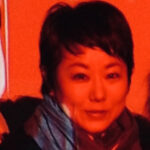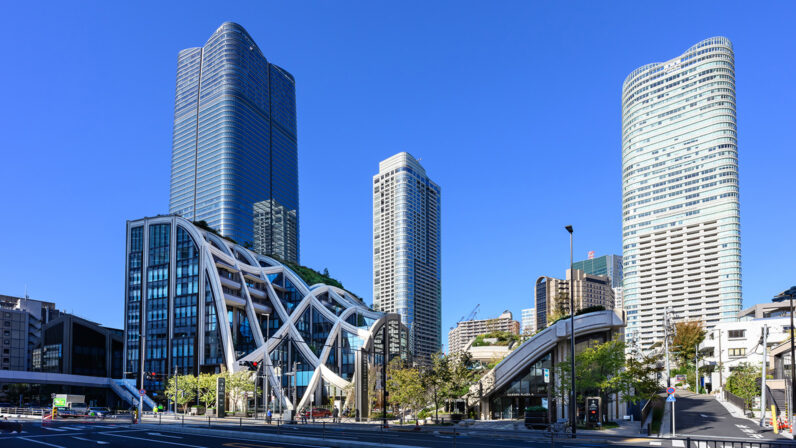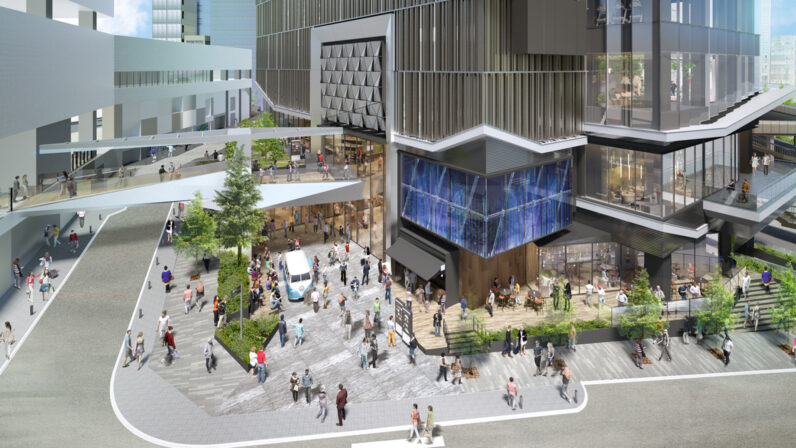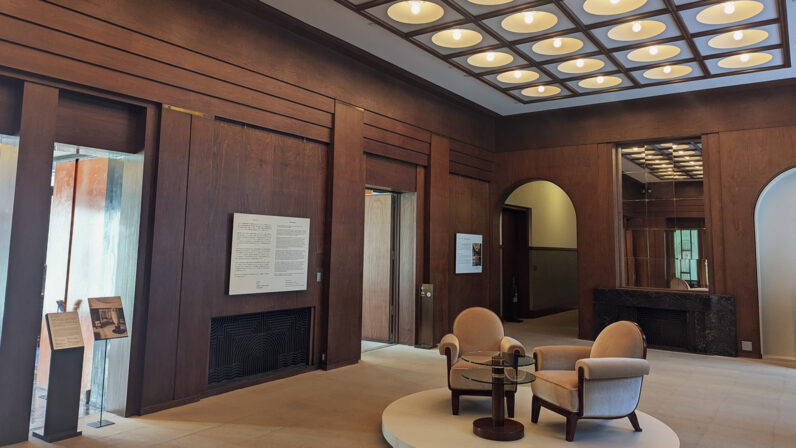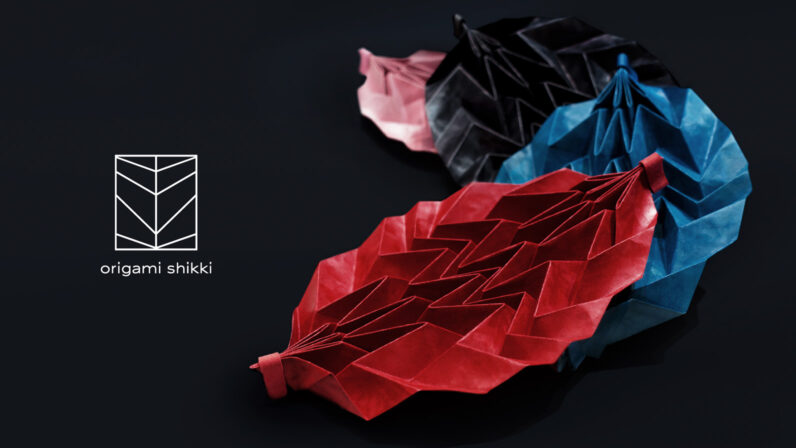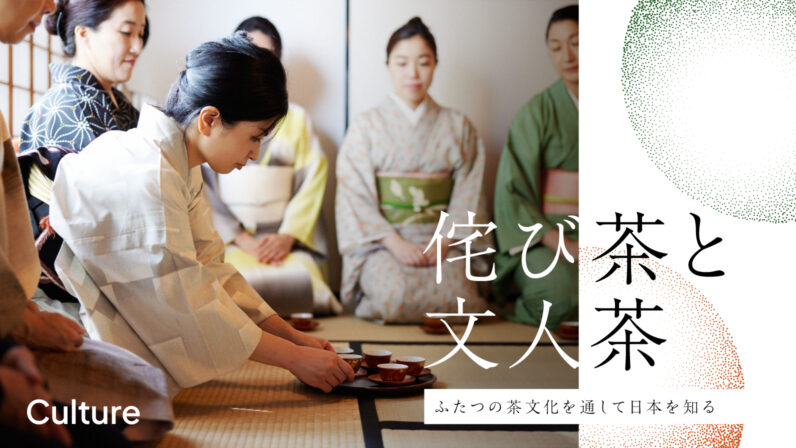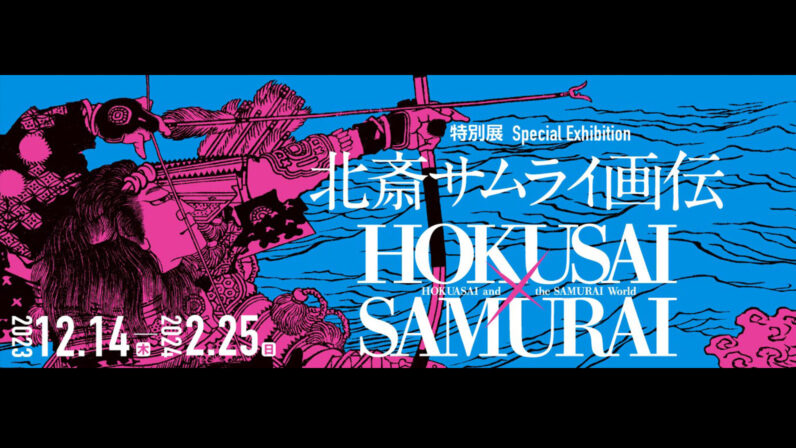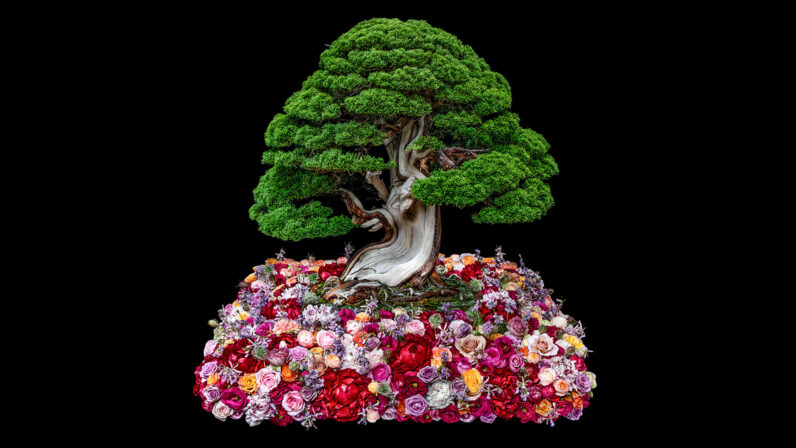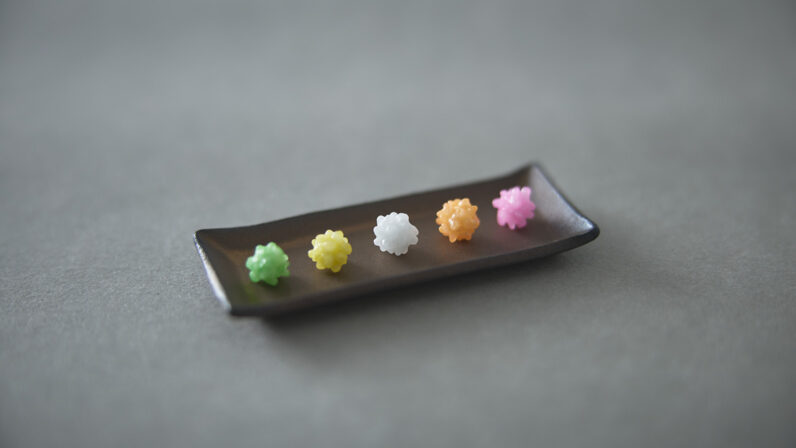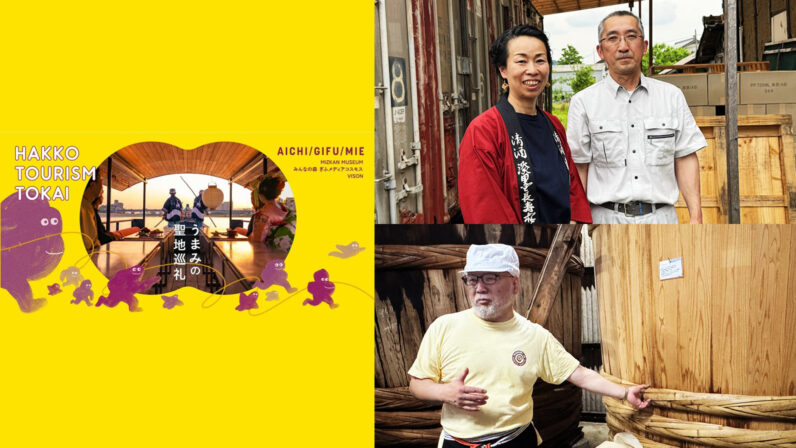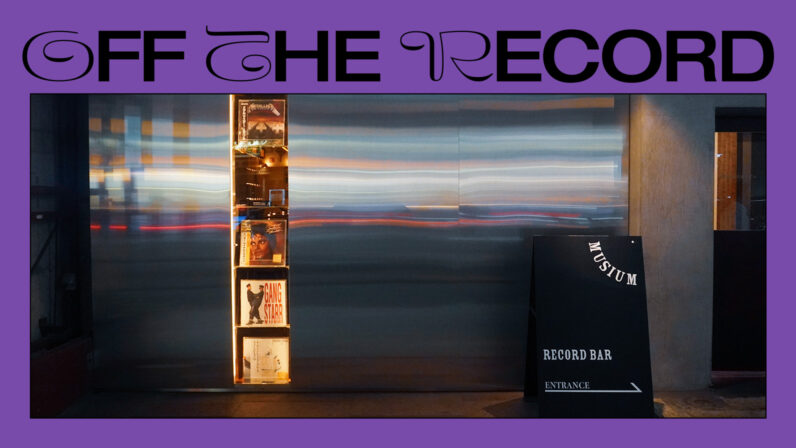About a 30-minute train ride from Shibuya Station on the Tokyu Toyoko Line and Minatomirai Line lies Yokohama. Despite being a bustling business hub near the Tokyo metropolitan area, Yokohama offers a blend of western charm and a refreshing sense of openness. Currently underway in this city is the 8th Yokohama Triennale, an international art exhibition brimming with creativity, global perspectives, and inspiration.
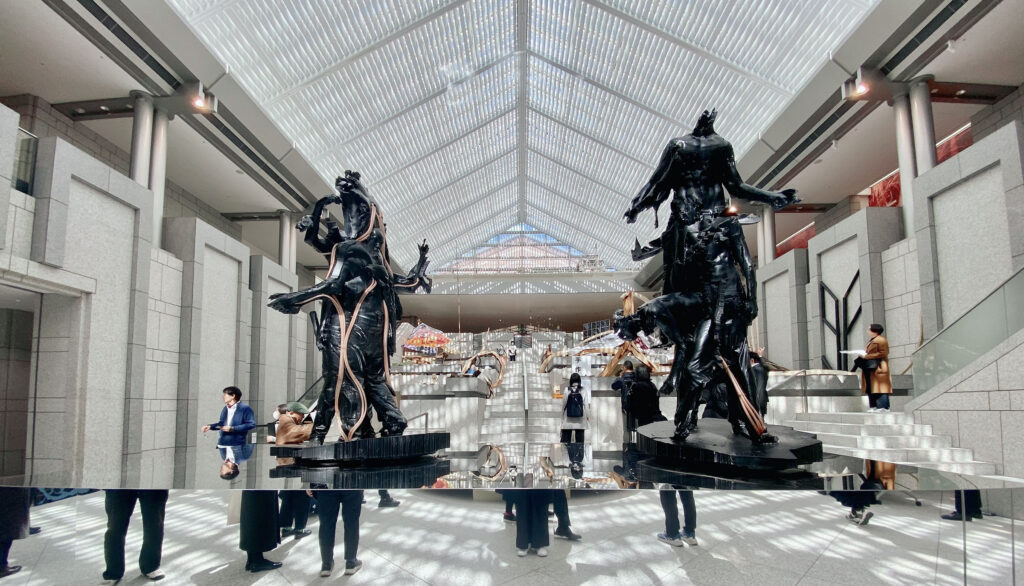
‘Mars’ and ‘Janus’ by Miles Greenberg, created in 2022. These sculptures were crafted using data scanned from his own performance.
The Yokohama Triennale is an international contemporary art exhibition held once every three years. It is an art festival that not only showcases internationally renowned artists but also sheds light on emerging artists from both Japan and abroad, offering insights into the latest developments in the art world. Started in 2001 and now in its 8th edition, this art festival stands as one of Japan’s oldest and pioneering art events, alongside the Echigo-Tsumari Art Triennale in Tokamachi City, Niigata Prefecture, which began in 2000. These festivals are among Japan’s oldest, held in various locations across the country.
To clarify some common terms, ‘Triennale’ refers to an event occurring every three years. For example, a ‘_ Triennale’ denotes an exhibition taking place once every three years in that specific area. Exhibitions held biennially are termed ‘Biennale.’ The Venice Biennale is a notable example. Additionally, there are events showcasing artworks from various artists, such as ‘Art Festivals’ and ‘Art Fairs.’ An Art Festival includes exhibitions held not only in museums but also in various locations within the hosting region, offering opportunities to appreciate artworks. An Art Fair, on the other hand, brings together galleries from around the world, providing both viewing and purchasing opportunities for artworks.

Pippa Garner’s ‘Human Prototype’ from 2020, displayed in the central area of the Grand Gallery. The hands of a man and a woman, each forming half of the sculpture, hold a baby.
The Yokohama Museum of Art, one of the main venues for the 8th Yokohama Triennale, was designed by Kenzo Tange and opened in 1989. It had been closed since 2021 for extensive renovations but reopened in conjunction with this exhibition. The renovations included the refurbishment of the glass-paneled ceiling louvers in the Grand Gallery, creating a spacious area where natural light can stream in according to Tange’s original concept, adjusting to the changing seasons.
The artistic directors invited for this edition are two individuals based in Beijing: the artist and curator LIU Ding, and the art historian and curator Carol Yinghua LU. This occasion’s theme is ‘Wild Grass: Our Lives,’ inspired by the poetry collection ‘Wild Grass,’ published in 1927 by the Chinese novelist Lu Xun.
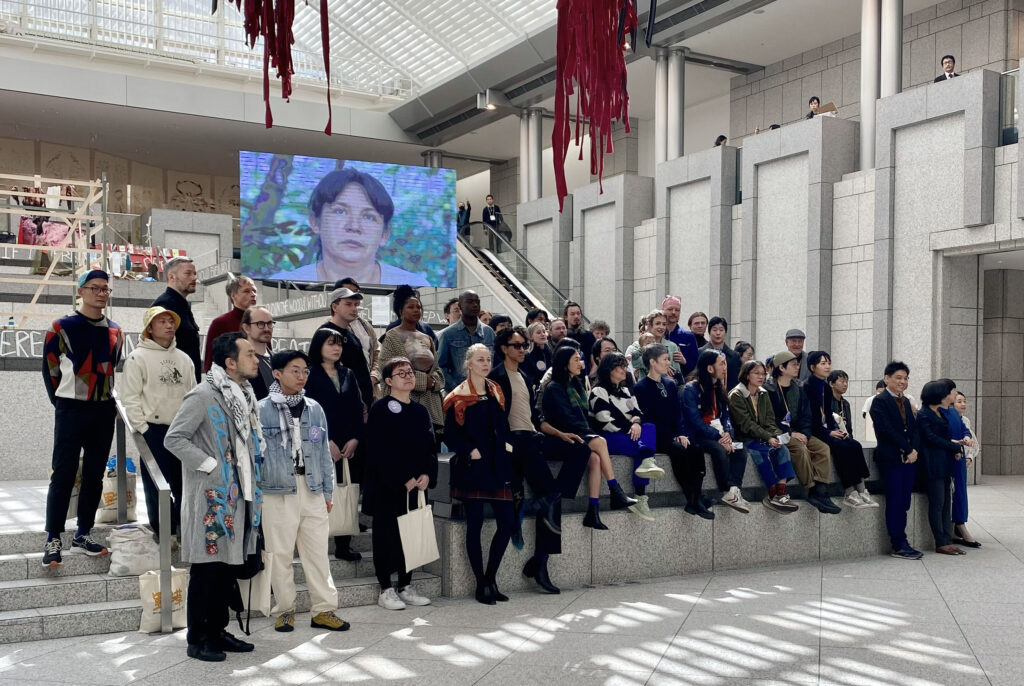
The artists gathered together. In the background, there was a video installation titled ‘Repeat After Me’ (2022) by the Ukrainian artist group Open Group. It depicted people who had sought refuge in camps due to the Russian invasion of Ukraine, mimicking the sounds of attacks by the Russian army with their mouths. Their voices reverberated throughout the Grand Gallery.
Lu Xun was a solitary thinker who continuously voiced dissent in 20th century China. This exhibition gathers art that reflects various ‘struggles of existence,’ such as pandemics, wars, disparities, and divisions, while also examining history. Based on his thoughts and philosophy, a total of 93 artist groups participated, including 31 exhibiting for the first time in Japan, with 20 presenting new works.
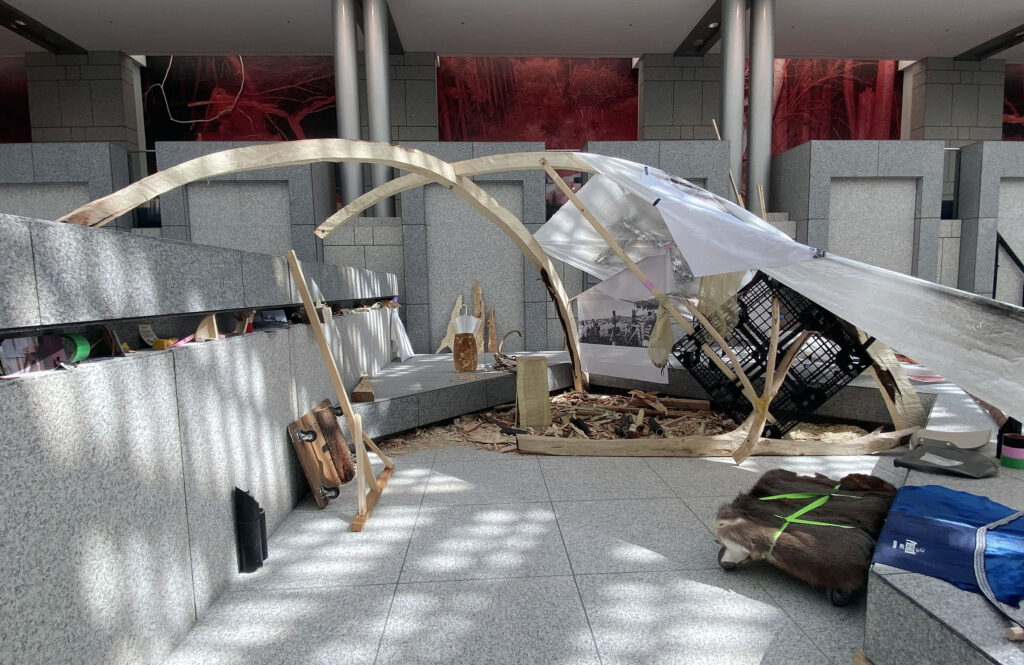
‘Ávnnastit / Harvesting Material Soul,’ 2024, created by Joar Nango, descendant of the Sami, a nomadic tribe living in the Arctic Circle. Temporary spaces for relaxation were crafted using local materials and techniques.
The theme of the Grand Gallery, with its stair-like structure at both ends, is ‘Our Lives.’ It showcases a variety of artworks including sculptures, videos, and installations. Up from the Grand Gallery lies the exhibition floor where there are seven exhibition rooms featuring themes such as ‘Dialogue with the Mirror,’ ‘My Liberation,’ ‘Fires in the Woods,’ ‘Streams and Rocks,’ and ‘Symbol of Depression.’ Visitors can appreciate expressions in various mediums, from photographs, paintings, and videos to sculptures and performances.
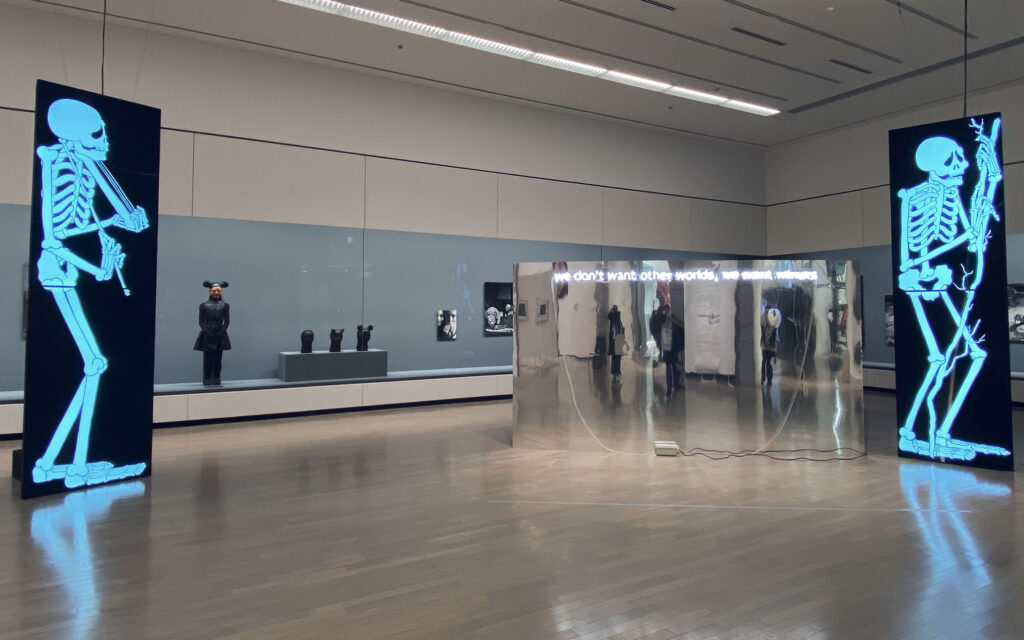
‘Dialogue with the Mirror’ from Gallery 1. The animated skull artworks on both sides are created by Ozgur Kar, while the message depicted in neon on the front mirror is by Rafaella Crispino. The three-dimensional artwork at the back is by Aneta Grzeszykowska.
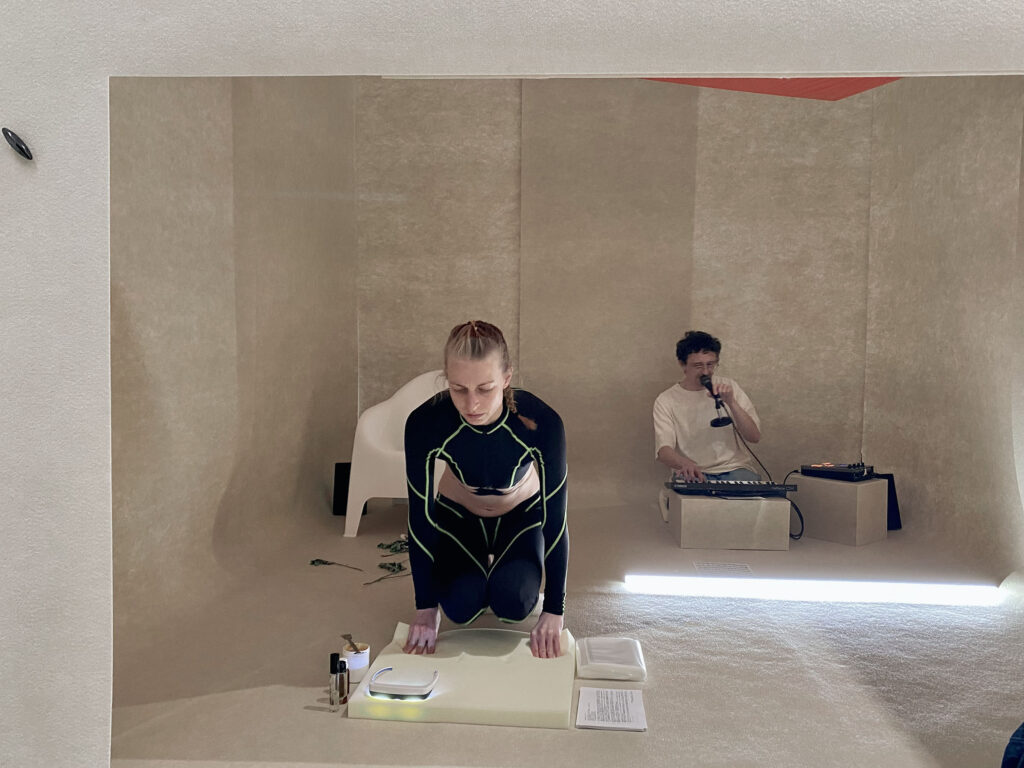
Myrthe Van der Mark’s ‘The Ecstatic Being.’ Images from the artist’s performance on March 15th and 16th.

The top row showcases works by Norm Clasen, who photographed cowboys in the American West for Marlboro cigarette advertisements from 1978 to 1991. In the bottom row, there are prints by Treiborlang Lyngdoh Mawlong, who hails from Eastern India and focuses on depicting life in Indian villages.
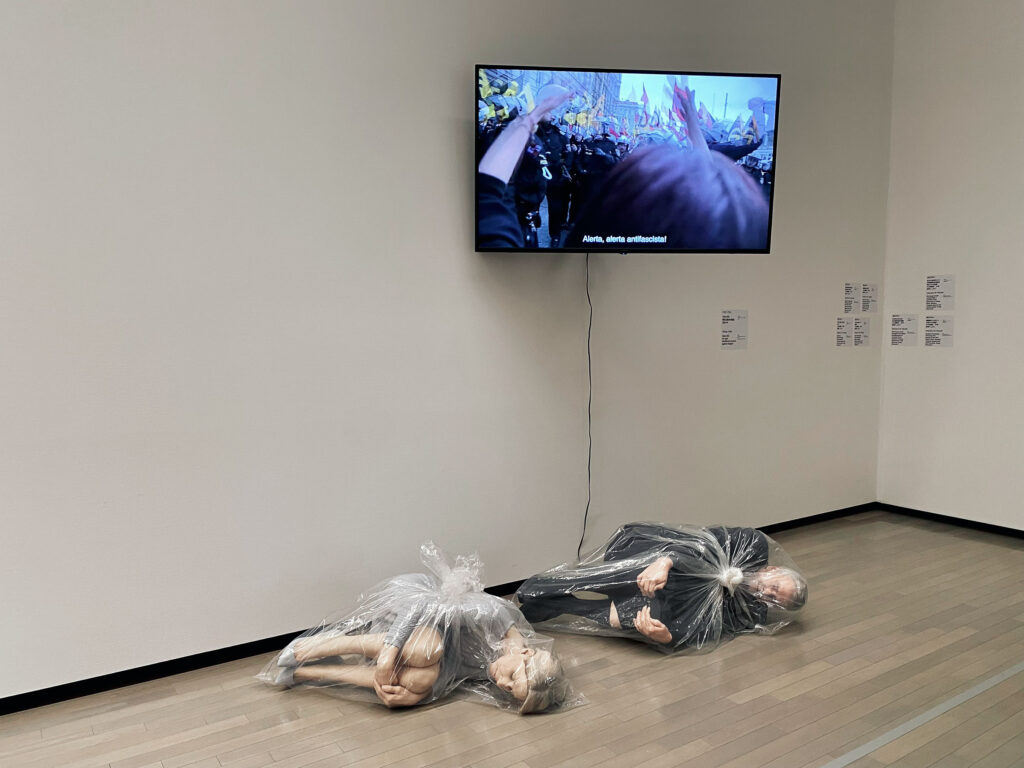
The video above is ‘V65: Far right Identitarians protest against refugees in Vienna (2016)’ by Tomas Rafa , while the sculptures below are ‘Thank You for Your Years of Service (Joann / Lawyer)’ and ‘Wrapping Things Up – (Tom / Administrator)’ both from 2016 by Josh Kline.
Each artwork is fascinating to simply observe, but delving into the concepts and themes through accompanying texts enriches the experience even further. In contemporary art, artwork speaks for itself but there’s so much more to gain by understanding the background from which it emerged, and how its concept is expressed by the artist. Moreover, contemplating how adjacent artworks are related, how they harmonize, and how they enhance each other can also be thought provoking and cognitively stimulating.
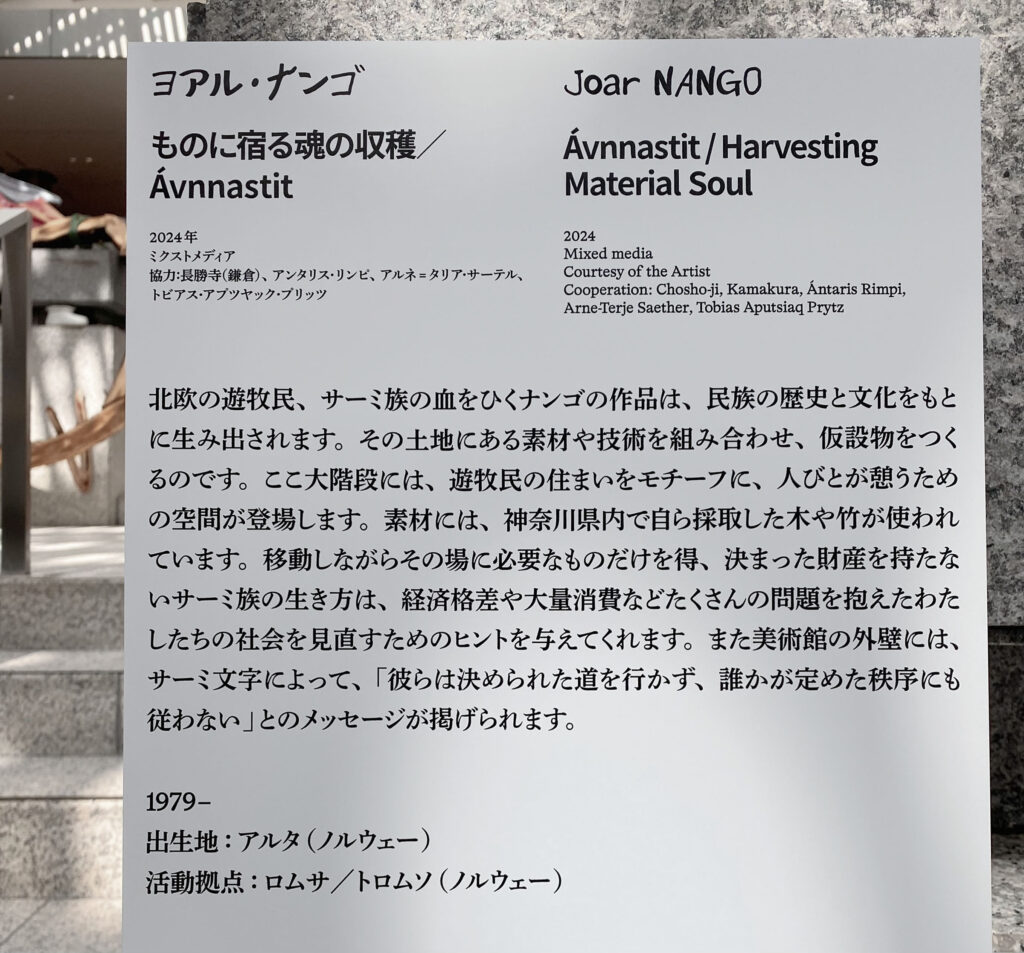
The interpretive panels in the venue are easy to comprehend and provide thorough details.
With such a vast array of artworks on display, it’s challenging to stop and focus on every single one. However, skimming through them all wouldn’t provide the full experience. Thankfully, this exhibition makes navigation easy, and alongside the artists’ names and titles of the works, their origins and current base of activity are prominently displayed. It’s highly recommended to take your time to carefully observe the pieces that catch your eye at first glance before moving on to the others. Even if just one or two, you’re highly likely to leave with appreciation for artworks or artists that resonate with you. Perhaps, these pieces might carry messages so profound that they could potentially change your life. That, indeed, is the gateway of contemporary art.
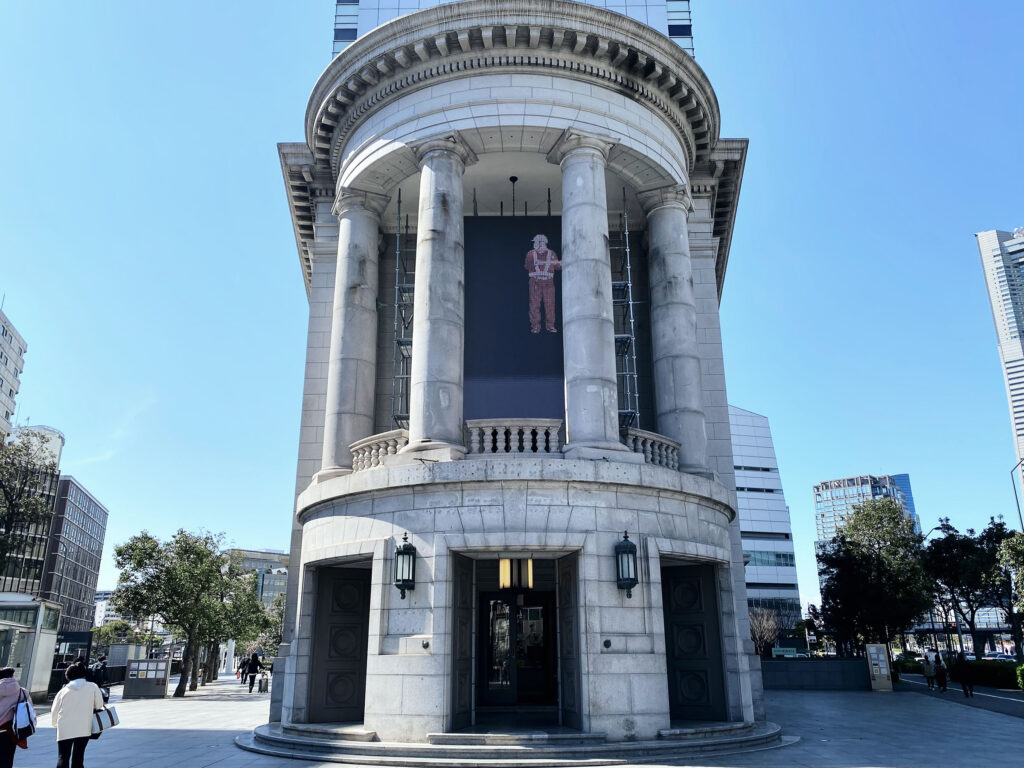
At the former Yokohama First Bank branch and just across the street at BankART KAIKO, exhibitions centered around the theme of ‘All the Rivers’ are on display. On the balcony of the former Yokohama First Bank branch, you’ll find ever-changing video artworks curated by the artist collective SIDE CORE throughout the exhibition period.
The exhibition also isn’t limited to just the Yokohama Museum of Art. Exhibitions centered around the overarching theme of ‘Wild Grass: Our Lives’ are being held at various venues, including the imposing stone-built former Yokohama First Bank branch, BankART KAIKO, Queens Square Yokohama, and the connecting passage between Minatomirai Line Motomachi-Chukagai Station.
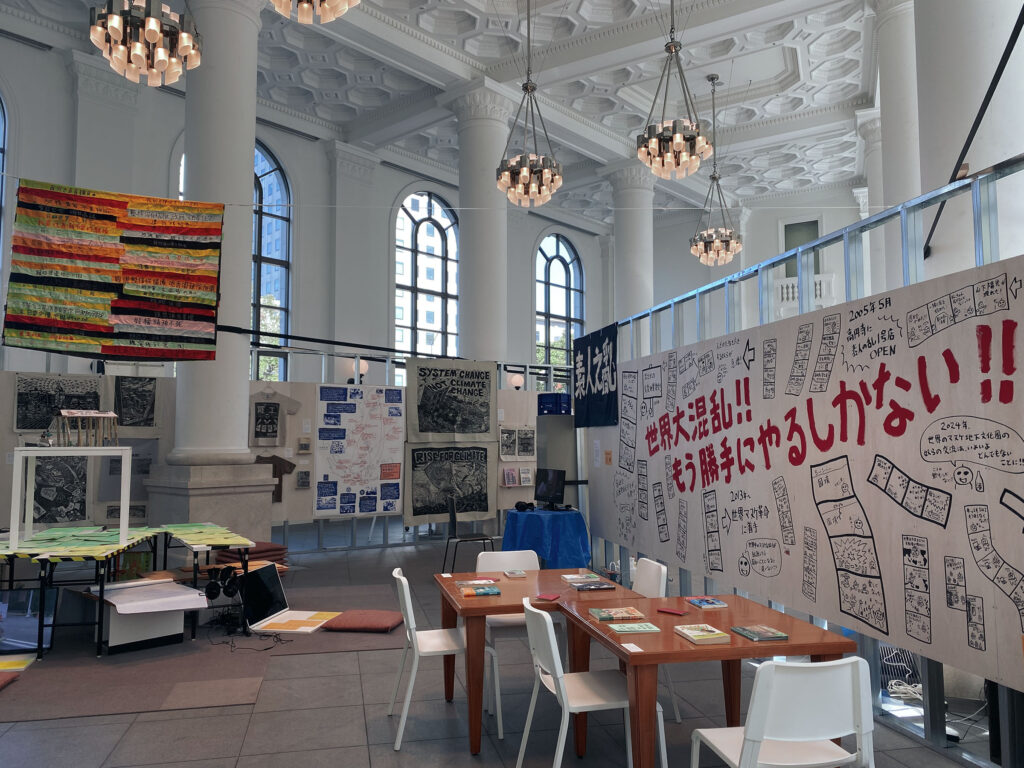
The artwork of Hajime Matsumoto (right) displayed inside the classic former Yokohama First Bank branch, where chandeliers hang, alongside the installation by Liao Xuan-zhen and Huang I-Chieh.
Additionally, under the title ‘Many Many Arts’, various art exhibitions will take place across Yokohama until June 9th during the exhibition period. The Yokohama Triennale not only holds the distinction of being the oldest among art festivals but also ranks among the largest in scale. The venues include the following locations:
-BankART Station underground at Shin-Takashima Station on the Minatomirai Line
-Under the elevated tracks between Hinodecho Station and Oimachi Station on the Keikyu Line
-The concourse at Bashamichi Station on the Minatomirai Line
-Zou-no-hana Terrace facing Yokohama Port
-Newman Yokohama inside Lumine Yokohama at Yokohama Station
-Yokohama Marine Tower
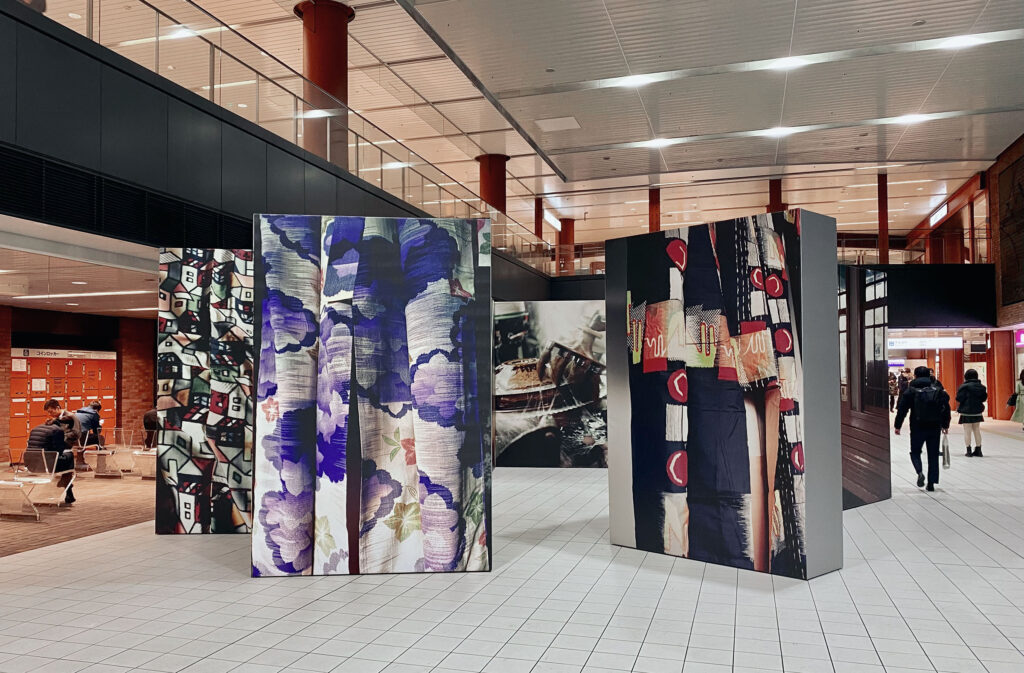
‘Silk Threaded Memories’ by Miyako Ishiuchi exhibited in the concourse of Bashamichi Station on the Minatomirai Line.
In essence, whenever you think of exploring Yokohama or its surroundings, you’ll find art exhibitions nearby. As you walk guided by art, you’ll encounter buildings and shops unique to this port town, which was one of the first to open to the world in the late Edo period. Between enjoying culinary delights in Chinatown and leisurely moments by the sea, spend a day immersed in Yokohama’s streets and art.
The 8th Yokohama Triennale : Wild Grass: Our Lives
Venue: Yokohama Museum of Art and other locations
Duration: March 15th to June 9th
Closed on Thursdays (except April 4th, May 2nd, and June 6th)
Opening hours: 10:00 to 18:00 *Last admission is 30 minutes before closing time. Extended hours until 20:00 from June 6th to 9th.
Admission fee: General 2,300 yen and more.
Website : https://www.yokohamatriennale.jp/2024/en

